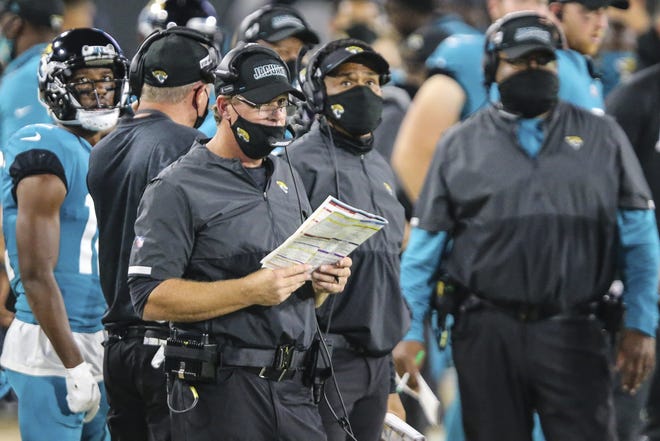The pandemic and its planet-wide devastation continue. So it's hard to remember sometimes that other epidemics exist alongside it, cutting down lives and searing families forever in the process.
The dead should be remembered. They are still mourned by those who loved them. And a community that is somehow less without them.
These are some of their names. These are some of their faces.
Look close. But know this: Epidemics, like pandemics, morph. Now, 3 of 4 people who die from overdose die because of fentanyl.
The highly potent synthetic drug is the top killer among opioids in the United States. And the amount that can kill a person is a fraction of the amount of heroin that would do the same.
The powder form of fentanyl snaked into the Cincinnati area around 2013. It was an anomaly. Back then, heroin was considered the biggest threat for overdose death in the region. But narcotics officers began to find fentanyl in heroin they seized, and the overdose death toll began to rise.
Fentanyl is 30 to 50 times stronger than heroin. That potency translates into flexibility in use and in transport. Tiny amounts of fentanyl can deliver a strong high and a grave death threat. Fentanyl rapidly overtook the drug supply in a region, Ohio and Kentucky, that has been entrenched in an epidemic of overdose deaths for years.

“I often refer to it as the Frankenstein molecule,” says Dr. Mina “Mike” Kalfas, a Northern Kentucky addiction specialist who has treated people with opioid use disorder since the 1990s.
In part, that's because this man-made opioid can be easily altered. The chemist merely changes a chemical bond and a new iteration is created – one that can be stronger than the last. The synthetic opioids are manufactured in "bucket factories" – clandestine labs overseas, often in China – without the kind of precision that's used in a legitimate pharmaceutical lab. The effect of that imprecision? Those who use the drug can't be sure how strong a dose will be.
Most of the fentanyl that crosses U.S. borders comes through Mexico, according to the U.S. Drug Enforcement Administration. It is also purchased via the internet and dark web.
In Ohio, fentanyl was responsible for 76% of the overdose deaths in 2019, Ohio Health Department data show.
What is fentanyl? More on the synthetic opioid
See what fentanyl is and how it's been tainting other drugs, causing overdose and death in unprecedented numbers.
Terry DeMio, [email protected]
In Kentucky, fentanyl caused 71% of the overdose deaths in 2020, Kentucky Office of Drug Control Policy records show.
And in 2020, a record year of overdose deaths: "Opioids were responsible for nearly three-quarters of the more than 93,000 fatal drug overdoses in the United States,” U.S. Deputy Attorney General Lisa O. Monaco said on Sept. 27.

Cincinnati Enquirer
That same day, the U.S. Drug Enforcement Administration warned the public that it had seized 1.8 million fentanyl-laced pills since August.
“One pill can kill,” Monaco said.
The counterfeit pills are designed to look like legitimate prescription painkillers. The Cincinnati area has seen this kind of supply for several years. The pills are made with a pill press, with the name or logo of a prescription opioid – Percocet, Vicodin, OxyContin – and milligram strength stamped on them to look just like the prescribed pain pills.
The volume is what's new: The pills are widely available, the DEA reports. The number of DEA-seized counterfeit pills with fentanyl has jumped nearly 430% since 2019.
Fentanyl has also been used with or dropped into non-opioid drugs, fueling an uptick in overdose deaths among cocaine users and people who use crystal meth since 2017.
Newtown Police Chief Tom Synan, a national voice for medical and mental health intervention instead of jail for people with addiction, says fentanyl "exposed what's wrong" with the criminal justice approach.
"Because as a country we did not act quickly enough to disrupt manufacturing when it was first being detected, it has spread rapidly, is so invasive, more adaptable and deadly than any other drug and such a staple in illegal drug supply, we are unable to keep up," Synan said.

Enquirer file photo
"Because of our history of criminalizing addiction instead of treating it as a mental, medical health condition, of not having a continuum of care model in place for people with addiction, of being slow in recognizing fentanyl's dangers and because of continued stigma towards addiction," Synan said, "the environment was primed for the natural progression to more potent and powerful synthetic drugs."
A fentanyl overdose can be reversed with naloxone, though multiple doses of the antidote may be needed to revive the user. The non-narcotic opioid overdose antidote, often provided in a nasal spray, is available at needle exchanges and public health clinics in Cincinnati and Northern Kentucky. It is also available at pharmacies. Harm Reduction Ohio offers online training and mail-in Narcan for people who are unable to access it in-person.
Another overdose-prevention method is the fentanyl test strip. Some health departments, needle exchanges and other harm-reduction sites provide fentanyl test strips to people who use drugs. The user can add water to a powder drug and place the strip in the mixture, and, in one to two minutes, the strip will show one red line to indicate the presence of fentanyl. But the strips may not detect all analogues of fentanyl.

Enquirer file photo
Five fentanyl analogues accounted for 76.4% of the fentanyl analogues trafficked in fiscal year 2019, according to the U.S. Sentencing Commission, and nearly all were illicitly manufactured.
Fentanyl is also a legally manufactured opioid, used as a pain medication in the United States. It is sometimes prescribed in a patch form for people who have cancer.
Tami George Lyle of Crestview Hills, Northern Kentucky, a nurse, has experience using the medication for various procedures.
She knew, back in 2016, that a rogue fentanyl had hit the heroin supply in Northern Kentucky.
Her son, Zachary Ziehm, had struggled with opioid use disorder as a young man. He'd been in recovery for more than three years and was the father of a 10-month-old boy when he used what he thought was heroin on April 24, 2016, his mother said. Ziehm, 24, overdosed and died.
"Because I was aware how lethal fentanyl was when Zach died I was anxious to get the autopsy and toxicology report to see if fentanyl was present," she said. "And it was."
"I was devastated," George Lyle said. “Zach didn’t stand a chance."
Jamie Green of Northern Kentucky was 25 when she died Sept. 4, 2015, from a heroin and fentanyl overdose in the Kenton County jail.

She was the mother of two, and she'd struggled with addiction through her early adulthood. Her own father had died from a heroin overdose when Jamie was 11. Her mother, Kimberly Mullins, also suffered from heroin addiction. On and off for several years, family member Rachel Riffle O'Hara of Erlanger took in Jamie and treated her as her own child.
Mullins, of Covington, was convicted on federal charges for helping Jamie get heroin while she was jailed in both Campbell County and Kenton County.

Stephanie Gaffney was 28 when she died from an overdose on July 28, 2017.
She had been living in First Step Home, a residential recovery home in Walnut Hills.
Gaffney and her daughter were featured in The Enquirer's Pulitzer Prize-winning Seven Days of Heroin, during their appointment at Cincinnati Children's Hospital Medical Center.
Learn her story: Seven days of heroin
Baby Elliana was pronounced healthy, and during the doctor's visit, Gaffney cuddled and played with her and talked about her hopes for Elliana's future.
Gaffney died 10 days later. Her parents are in the process of adopting Elliana.
In July Stephanie Gaffney told The Enquirer she was in treatment for her opioid addiction and aimed to create a good life for her child. Ten days later, she died of brain damage after an opioid overdose. The Enquirer/Cara Owsley
The Enquirer/Cara Owsley

Austin Cicchinelli was 21 when he died from an overdose on June 26, 2017, in his grandparents' Loveland home.
He'd struggled with depression and substance use disorder, his mother, Amanda Cicchinelli said. And like many who have addiction issues, Austin swung from use to recovery. He once wrote in his journal, “I wish I could build a time machine and stop myself from all of the choices. I would show myself the things I was too naive and blind to see. I would stop myself from ever even buying my first bag of weed.”
His mother advocates for people with addiction, helping them break down barriers to treatment.

Ashley Pels of Cincinnati was 34 when she died from an overdose on Sept. 16, 2020.
She had struggled with addiction since she was 26 years old. She happily gave birth to a baby girl while she was in recovery, but relapsed shortly after.
In an interview with The Enquirer in 2019, Pels talked about her hope for her future: "I just want to be a mom. I don't even want anything extravagant," she said. "All I want right now is to be Ashley again. To be able to smile without putting dope inside of me."

Samuel Gillman was 24 when he died from an overdose on July 22, 2017, of fentanyl-laced heroin in his Delhi apartment.
A loving son and father, Samuel had struggled with depression as a teenager, said his mother, Katie Renfrow of Western Hills. And although he received therapy and treatment, he self-medicated with drugs. He was treated for addiction repeatedly, Renfrow said.
After Samuel died, Renfrow started a foundation called Our SAM that helps people get recovery housing. She recounted for The Enquirer her reaction when she heard, by phone, of her son's death. "My legs completely came out from under me and I just dropped," Renfrow said. She leads an annual remembrance day in Hamilton County for those who've overdosed and died.

Alison "Allie" Shuemake was 18 when she died from an overdose in her Middletown apartment on Aug. 26, 2015.
She was a "normal teen" and a high school graduate who had just settled into her first apartment that month, says her mother, Dorothy Shuemake. Allie had a job, she’d purchased her first car. She seemed healthy, her mother said.
Her parents had been trying to get help for their daughter, who struggled with addiction. Dorothy Shuemake said Allie was treated at Cincinnati Children's Hospital Medical Center, among other places. Allie had periods of recovery and would relapse, like so many who suffer from heroin addiction. Her mother found her overdosed in bed – and sang her a lullaby as she awaited medics.

Matthew "Casey" Wethington of Kenton County was 23 when he died from an overdose on Aug. 25, 2002.
As a boy, Casey took part in sports, collected baseball cards, loved skateboarding and played guitar. His mother, Charlotte Wethington of Morning View, Kentucky, said her son fell into addiction after experimenting with drugs, and she was unable to get him medical treatment despite her repeated efforts.
After Casey died, Wethington successfully advocated to the Kentucky General Assembly for legislation that would allow families and loved ones of adults with addiction to petition for involuntary treatment through a civil procedure in court. "Casey's Law" went into effect in 2004 but now faces a constitutional challenge in the Kentucky court system.

Coty Glass of Dry Ridge, Kentucky, was 22 when he died on May 25, 2014, from a heroin overdose.
"Coty was the first person that I knew I would give my life for and love unconditionally," said his mother, Rhonda Dupuy of Northern Kentucky. "Coty loved all types of music, pulling tractors, riding four-wheelers, the outdoors, hanging out with his friends and making others laugh."
Dupuy had arranged for Coty to receive medication-assisted treatment for opioid addiction, but the appointment early in May was canceled by the doctor's office to await for insurance coverage and rescheduled for May 27, 2014. Coty used one more time and died two days before the new date, Dupuy said.

Source link








